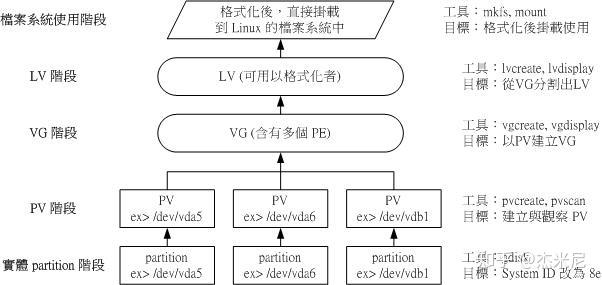由于项目与学习需要,最近学习了bianchi模型,并在python中进行了公式->代码的转化,仿真结果与ns3结果对比。
本文更多的是理解模型各个部分的含义、把各个简单的推导过程转化为python、ns3对比:
1 理论吞吐与传输概率、传输成功概率、包长、速率、排队时间、成功传输时间、碰撞耗时的关系
2 传输概率、传输成功概率、包长、速率、排队时间、成功传输时间、碰撞耗时的关系这几个参数的简单推导
3 各个公式都有最初的已知量、推导出的中间量、最终的目标吞吐,一级一级的整理就可获得最初已知量和目标吞吐的关系,并将其画图
4 ns3在无实测环境的情况下,是一个比较好的验证环境,对比第三步的图以及仿真结果图,可以验证模型是否符合实测情况
而事实上,建模的标准流程就是以上步骤:根据初始变量、各种场景,列出基本的推导->根据中间量导出吞吐或者延时->算出各个情况下吞吐、延时结果,描点画出折线->ns3设置同样的条件,仿真对应的延时吞吐结果,描点并证明自己的模型可靠
分为3部分
本文为第一部分
第二部分是Bianchi模型、python计算及ns3验证_关于E[P*]的补充-CSDN博客
第三部分是验证2~10 STA的情况下,bianchi和ns3对比结果Bianchi模型、python计算及ns3验证_关于2~10 STA验证的补充-CSDN博客
bianchi模型简要说明
来源:
https://zhuanlan.zhihu.com/p/24302361![]() https://zhuanlan.zhihu.com/p/24302361
https://zhuanlan.zhihu.com/p/24302361
结合2步骤中的python代码看公式:
预设
self.bitrate = 56E6#传输速率,如连续传输56Mbit,需要1s
self.n = 30#STA数目
self.b00 = 0#马尔科夫链回到 0 0状态的概率
self.ACK = 14 * 8#ack包长度 bit
self.SIFS = 10E-6#sifs时间 10us
self.slot = 9E-6#9us
self.DIFS = 3 * 9E-6#difs时间 3*slot
self.H = 2 * 8#头长度 bit
self.E_P = 80#平均包长
self.E_P_star = 100#碰撞包最长平均包长
self.W = 12#初始化窗口大小
self.m = 7#最大退避轮次
self.prop_delay = 0#传播时延在开始计算前再初始化一次:
bitrate = 1E6
ACK = 112 + 128
SIFS = 28E-6
slot = 50E-6
DIFS = 128E-6
E_P = 8184
E_P_star = E_P
WW = [32, 128]
mm = [3, 5]
H = 272 + 128
prop_delay = 0
nn = range(5, 50)self.calculate_p_t()
计算冲突概率p和某个STA的发送概率τ:
def calculate_p_t(self):
def equations(x):
p, t = x
my_sum = 0.0
for i in range(0, self.m):
my_sum += (2.0 * p) ** i
##p - 1.0 + (1.0 - t) ** (self.n - 1.0),
##2.0 / (1.0 + self.W + p * self.W * my_sum) - t
return ( p - 1.0 + (1.0 - t) ** (self.n - 1.0), 2.0 / (1.0 + self.W + p * self.W * my_sum) - t )
self.p, self.t = fsolve(equations, (0.1, 0.1))
print("System solved, error (p, tau): " + str(equations((self.p, self.t))))

其中起始窗口Wmin、最大重试次数m、STA数目n都是已知的。
my_sum 是Σ求和结果,calculate_p_t联立以上公式并求出p与t的结果——上式只有p和τ两个未知数,可以解出结果。
self.calculate_Ptr()
def calculate_Ptr(self):
self.P_tr = 1.0 - (1.0 - self.t) ** self.n

计算n个STA,除了大家都没尝试传输以外的情况——有一个或多个STA尝试传输——其中包含传输成功和碰撞两种情况。
中间值已知
self.calculate_Ps()
def calculate_Ps(self):
self.Ps = self.n * self.t * (1.0 - self.t) ** (self.n - 1) / self.P_tr
 计算在有STA传输的情况下,只有一个STA尝试传输而其他STA都没尝试传输的概率,共有n个STA,所以是n倍。
计算在有STA传输的情况下,只有一个STA尝试传输而其他STA都没尝试传输的概率,共有n个STA,所以是n倍。
self.calculate_Ts()
def calculate_Ts(self):
self.T_s = self.H / self.bitrate + self.E_P / self.bitrate + self.SIFS + self.prop_delay + self.ACK / self.bitrate + self.DIFS + self.prop_delay
self.calculate_Tc()
def calculate_Tc(self):
self.T_c = self.H / self.bitrate + self.E_P_star / self.bitrate + self.DIFS + self.prop_delay

Ts是成功传输耗时,Tc是碰撞传输耗时,其中H是头用时,EP是负载也就是数据部分用时,ack是回ACK用时,SIFS是负载和ack之间的等待延时,DIFS是传输成功或传输收不到ack之后的等待延时 、δ是传播时延——不过事实上SIFS和DIFS本来就是等传播时延的时间,传播时延含了,所以self.prop_delay = 0
其中Tc的计算Ep*是碰撞包的最长包的平均值,如果假设所有的包长都相等,则Ep=Ep*,我们这里取值(如不假设包长相等,参看Bianchi模型、python计算及ns3验证_关于E[P*]的补充-CSDN博客文章浏览阅读21次。bianchi的原文,在包长都选一样的情况下,P=E[P]=E[P*],也就是说正常传输、碰撞的payload耗时都是一样的——不过bianchi分析了如果引入不同的长度会造成何种影响:k个STA包碰撞的情况下,决定E[P*]的是k个STA中时间占用最长的那个,事实上此公式很让人不解,左侧需要求值是平均最大包长,右边分母是概率,分子左半边也是概率,分母右半边如果按照PDF看的话也是概率,如果按照CDF看就是概率的积分,再乘以1作为取值,就合理了。https://blog.csdn.net/Mr_liu_666/article/details/142748859)
self.E_P = 80
self.E_P_star = 100Ep Ep* H ACK的长度都已知,除以已知的bitrate就是对应时间,δ DIFS SIFS都已知
self.calculate_S()
def calculate_S(self):
self.S = self.Ps * self.P_tr * (self.E_P / self.bitrate) / (
(1.0 - self.P_tr) * self.slot + self.P_tr * self.Ps * self.T_s + self.P_tr * (1.0 - self.Ps) * self.T_c)

中间值都已知
self.calculate_b00()
def calculate_b00(self):
self.b00 = 2.0 * (1.0 - 2.0 * self.p) * (1.0 - self.p) / ((1.0 - 2.0 * self.p) * (self.W + 1) + self.p * self.W * (1.0 - (2.0 * self.p)**self.m))

初始窗口W、最大退避重试次数m已知,中间量已知
python公式化
来源:
https://github.com/segmentation-fault/BianchiPy/blob/master/calculate_bianchi_tr.py![]() https://github.com/segmentation-fault/BianchiPy/blob/master/calculate_bianchi_tr.py
https://github.com/segmentation-fault/BianchiPy/blob/master/calculate_bianchi_tr.py
源码内容:
__author__ = 'antonio franco'
'''
Copyright (C) 2018 Antonio Franco (antonio_franco@live.it)
This program is free software: you can redistribute it and/or modify
it under the terms of the GNU General Public License as published by
the Free Software Foundation, either version 3 of the License, or
(at your option) any later version.
This program is distributed in the hope that it will be useful,
but WITHOUT ANY WARRANTY; without even the implied warranty of
MERCHANTABILITY or FITNESS FOR A PARTICULAR PURPOSE. See the
GNU General Public License for more details.
You should have received a copy of the GNU General Public License
along with this program. If not, see <http://www.gnu.org/licenses/>.
'''
from scipy.optimize import fsolve
import matplotlib.pyplot as plt
class Bianchi:
# Calculates the throughput of a saturated IEEE 802.11 WLAN basic scheme according to:
# G.Bianchi, "Performance analysis of the IEEE 802.11 distributed coordination function," in IEEE
# Journal on Selected Areas in Communications, vol. 18, no. 3, pp. 535 - 547, March 2000.
# doi: 10.1109 / 49.840210
def __init__(self, bitrate, n, ACK, SIFS, slot, DIFS, E_P, E_P_star, W, m, H, prop_delay):
# INPUT:
# bitrate: raw bitrate in bps
# n: number of STAs
# ACK: ACK length in bits
# SIFS: SIFS duration in seconds
# slot: slot duration in seconds
# DIFS: DIFS duration in seconds
# E_P: average packet payload size in bits
# E_P_star: average length of the longest packet payload involved in a collision in bit (for an example, see eq. 16 in the paper)
# W: Minimum contention window size in slots
# m: Retry limit
# H: Header size in bits
# prop_delay: Propagation delay in seconds
#
# OUTPUT:
# S: normalized system throughput, defined as the fraction of time the channel is used to successfully transmit payload bits.
# p: the probability of a collision seen by a packet being transmitted on the channel
# t: the probability that a station transmits in a randomly chosen slot time
# Ps: the probability that a transmission occurring on the channel is successful is given by the probability that exactly one station transmits on the channel, conditioned on the fact that at least one station transmits
# P_tr: the probability that there is at least one transmission in the considered slot time
# T_s: the average time the channel is sensed busy, in seconds
# T_c: the average time the channel is sensed busy by each station during a collision in seconds.
# independent varz
self.bitrate = 56E6
self.n = 30
self.b00 = 0
self.ACK = 14 * 8
self.SIFS = 10E-6
self.slot = 9E-6
self.DIFS = 3 * 9E-6
self.H = 2 * 8
self.E_P = 80
self.E_P_star = 100
self.W = 12
self.m = 7
self.prop_delay = 0
# dependent varz
self.p = 0
self.t = 0
self.Ps = 0
self.P_tr = 0
self.T_s = 0
self.T_c = 0
self.S = 0
self.bitrate = bitrate
self.n = n
self.ACK = ACK
self.SIFS = SIFS
self.slot = slot
self.DIFS = DIFS
self.E_P = E_P
self.E_P_star = E_P_star
self.W = W
self.m = m
self.H = H
self.prop_delay = prop_delay
self.calculate_p_t()
self.calculate_Ptr()
self.calculate_Ps()
self.calculate_Ts()
self.calculate_Tc()
self.calculate_S()
self.calculate_b00()
def calculate_b00(self):
self.b00 = 2.0 * (1.0 - 2.0 * self.p) * (1.0 - self.p) / ((1.0 - 2.0 * self.p) * (self.W + 1) + self.p * self.W * (1.0 - (2.0 * self.p)**self.m))
def calculate_b(self, i, k):
if i < self.m:
W_i = 2.0 ** i * self.W
b_i0 = self.p ** i * self.b00
else:
W_i = 2.0 ** self.m * self.W
b_i0 = self.p ** self.m / (1 - self.p) * self.b00
return (W_i - k) / W_i * b_i0
def check_p_t(self):
c1 = self.p - 1.0 + (1.0 - self.t) ** (self.n - 1.0) <= 1.49012e-08
my_sum = 0.0
for i in range(0, self.m):
my_sum += (2.0 * self.p) ** i
c2 = 2.0 / (1.0 + self.W + self.p * self.W * my_sum) - self.t <= 1.49012e-08
return c1 and c2
def calculate_p_t(self):
def equations(x):
p, t 










![[Algorithm][贪心][合并区间][无重叠区间][用最少数量的箭引爆气球]详细讲解](https://i-blog.csdnimg.cn/direct/27bbfd48a78a44e189f6e447bb1efd60.png)






